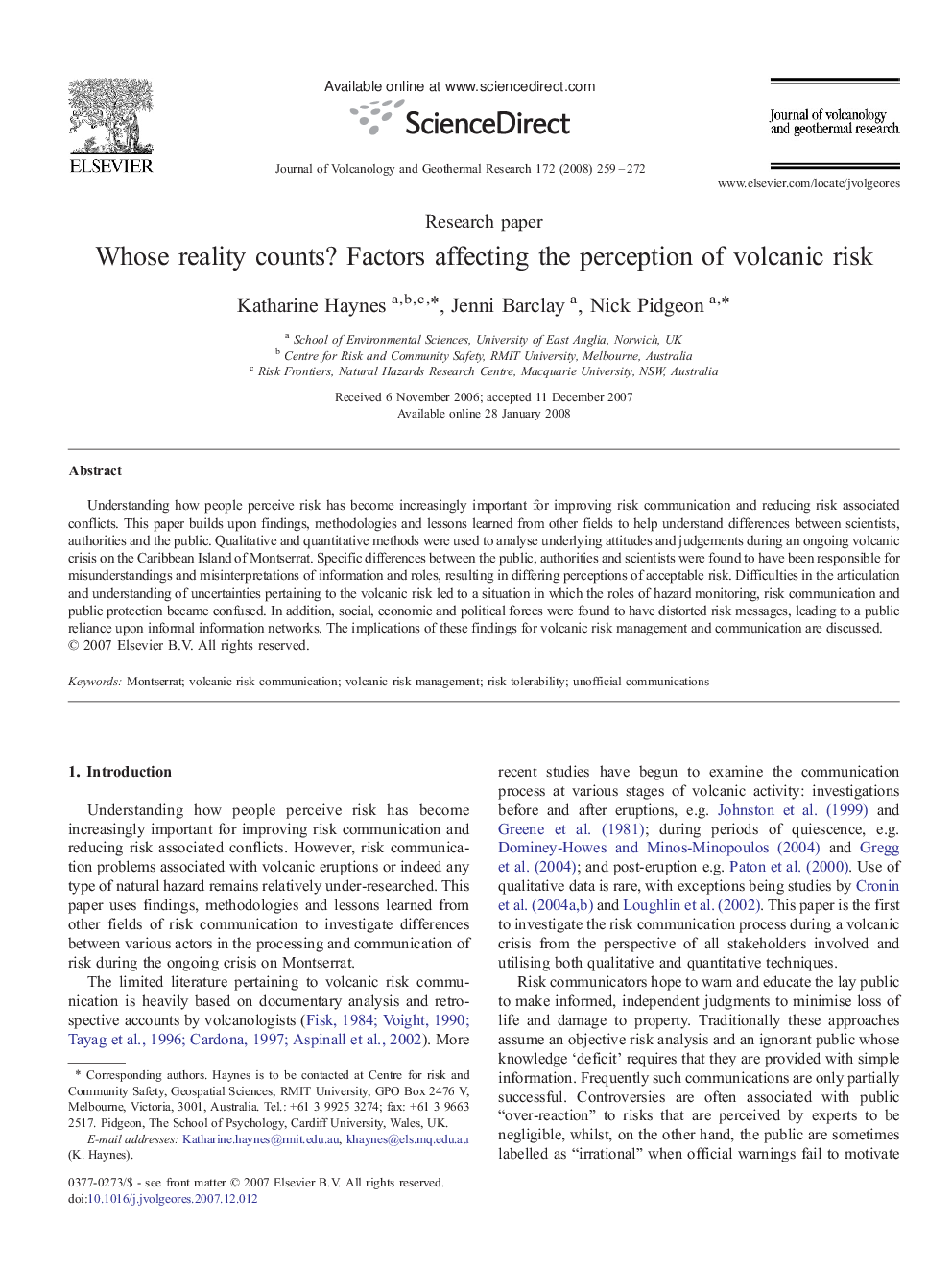| Article ID | Journal | Published Year | Pages | File Type |
|---|---|---|---|---|
| 4714551 | Journal of Volcanology and Geothermal Research | 2008 | 14 Pages |
Understanding how people perceive risk has become increasingly important for improving risk communication and reducing risk associated conflicts. This paper builds upon findings, methodologies and lessons learned from other fields to help understand differences between scientists, authorities and the public. Qualitative and quantitative methods were used to analyse underlying attitudes and judgements during an ongoing volcanic crisis on the Caribbean Island of Montserrat. Specific differences between the public, authorities and scientists were found to have been responsible for misunderstandings and misinterpretations of information and roles, resulting in differing perceptions of acceptable risk. Difficulties in the articulation and understanding of uncertainties pertaining to the volcanic risk led to a situation in which the roles of hazard monitoring, risk communication and public protection became confused. In addition, social, economic and political forces were found to have distorted risk messages, leading to a public reliance upon informal information networks. The implications of these findings for volcanic risk management and communication are discussed.
